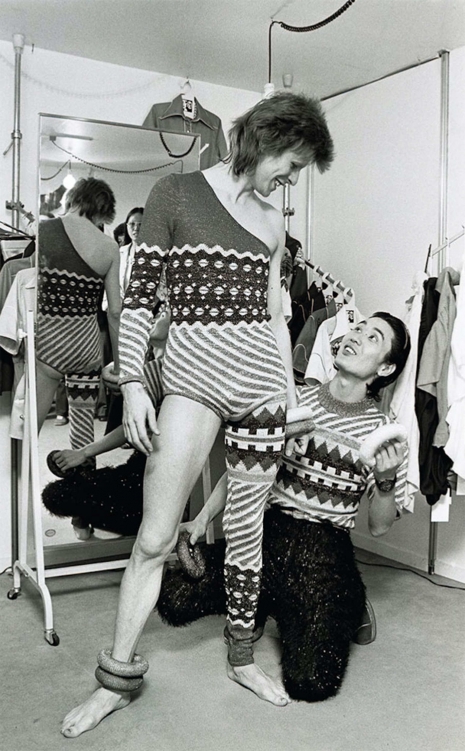
Style homages to David Bowie tend to be a dicey affair, if only because Bowie himself was such a master at adopting new visual looks for himself. Bowie always seemed to follow his own radar on such matters, and his particular genius lay in concealing the effort to such a considerable extent. Attempts to mimic the same vibe necessarily come off looking labored. Having said that, when you’ve got a top model and a man who photographed one of Bowie’s own album covers involved, your chances of success are better, but even then, not assured.
Obviously, 1973 was a huge year for Bowie as an authentic groundbreaker in fashion. He spent the first half of the year touring the Ziggy Stardust material, he released Aladdin Sane—in the same stroke introducing his lightning bolt face to the world, probably his most enduring stylistic element—as well as Pinups. It was also the year he reached out to Kansai Yamamoto, who crafted some of Bowie’s most bizarre and memorable outfits, most notably the “‘Tokyo Pop’ vinyl bodysuit” and the “Asymmetric knitted bodysuit.”

David Bowie and Kansai Yamamoto, 1973
In 2003 the fashion magazine Vogue got ahold of some of Bowie’s most iconic outfits and—with Bowie’s blessing—enlisted photographer Nick Knight, the man responsible for the cover shot on Bowie’s 1993 album Black Tie White Noise, and noted supermodel Kate Moss for the assignment.
In 2016 Knight reminisced about the gig:
I was delighted to do it. [Moss] was the exact same size as he was, she fitted his clothes really well—more than just in terms of size. Some models would just not look right in them, you can’t imagine putting some of the clothes on Linda Evangelista or Nadja Auermann or whoever would have been on the scene at the time. So Kate had both the attitude and the physical side of it which made her perfect for it and she loved it, she was incredibly good. Her talent is bringing out the narrative that’s in the piece of clothing—that’s why she’s such a good model. She can put on that pale blue suit and suddenly bring out the same narrative that Bowie would have brought out when he wore it.
After the jump, Moss-as-Bowie….......







